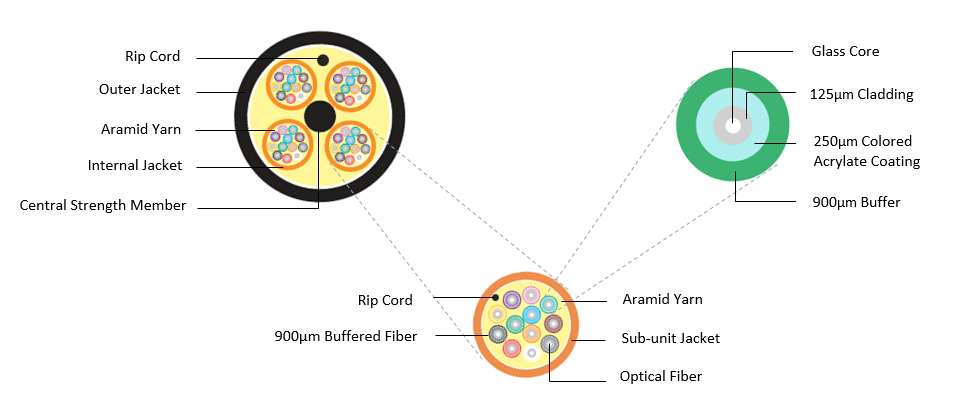What is the difference between a 250μm loose-tube cable and a 900μm tight-tube cable?
The 250µm loose-tube cable and the 900µm tight-tube cable are two different types of cables with the same diameter core, cladding, and coating. However, there are still differences between the two, which are embodied in the structure, function, advantages, disadvantages, etc., which also makes the two different in application.
In the case of a loose-tube fiber, it is helically placed in a semi-rigid tube, allowing the cable to be extended without stretching the fiber itself. The 250μm loose tube fiber is composed of core, 125μm cladding and 250μm coating. Generally speaking, the number of cores in a 250μm loose-tube optical cable is between 6 and 144. Except for the 6-core loose-tube optical cable, other optical cables are usually composed of 12 cores as the basic unit.
Different from the above-mentioned loose-tube structure, the 900 μm tight-buffered optical fiber has a hard plastic jacket in addition to the 250 μm loose-tube optical fiber structure, which can play a protective role. A 900μm tight-buffered fiber consists of a core, a 125μm cladding, a 250μm coating (which is a soft plastic), and a jacket (which is a hard plastic). Among them, the coating layer and the jacket layer will help isolate moisture from entering the fiber core, and can prevent the core exposure problem caused by bending or compression when the optical cable is laid underwater. The number of cores in a 900μm tight-buffered cable is usually between 2 and 144, and a tight-buffer cable with a larger number of cores is basically composed of 6 or 12 cores as the basic unit.
Due to the different functional characteristics of the 250μm loose tube cable and the 900μm tight tube cable, the usage of the two is also different. The 250μm loose tube cable is suitable for harsh environments and is widely used outdoors. Compared with the 900μm tight-buffer optical cable, the 250μm loose-buffer optical cable has higher tensile strength, moisture resistance and high temperature resistance, and is suitable for environments with temperature changes and high humidity. However, if stretched too much, it will pull the core out of the gel. Also, 250µm loose-tube cable may not be a good choice when routing around multiple bends is required.


